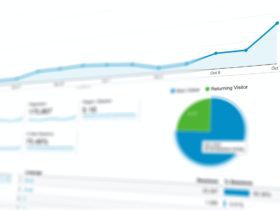Selecting an appropriate fleet monitoring system for your business is a crucial decision that warrants careful consideration. The right system can substantially improve your fleet’s efficiency, enhance safety, and result in significant cost savings. This guide will help you understand the key factors to consider when choosing a fleet monitoring system, from exploring different features and functionalities to evaluating system usability, scalability, and cost implications. Stay tuned as we delve deeper into the nuanced world of fleet monitoring systems, equipping you with the knowledge to make an informed choice for your business.
The Importance of Camera Systems in Fleet Monitoring
One crucial feature to consider when choosing a fleet monitoring system is the integration of camera systems. High-quality camera systems offer real-time visual insights into fleet operations, providing invaluable data for driver training, safety reports, and incident analysis. Considering the demanding nature of fleet management, specially designed commercial truck camera systems serve as an essential tool, allowing managers to monitor driver behavior, improve safety protocols, and ensure compliance with road regulations. Beyond commercial trucks, camera systems also prove instrumental for other vehicles in the fleet like vans, pickups, and specialty vehicles, contributing to comprehensive fleet monitoring by capturing critical visual data that aids in route optimization, vehicle maintenance, and accident reconstruction. They can capture multiple angles around each vehicle, providing comprehensive coverage to aid in incident resolution and promoting responsible driving behavior. By keeping a watchful eye on the road and the driver’s actions, they act as an unbiased witness in case of disputes, accidents, or violations. Therefore, a robust, high-resolution camera system is a pivotal component of an effective fleet monitoring solution.
Features and Functionality
When choosing a fleet monitoring system, it is of utmost importance to carefully evaluate the range of features and functionality it offers. Look for advanced features such as real-time tracking, geofencing, and route optimization, as these can significantly enhance the efficiency and productivity of your fleet operations. Additionally, a comprehensive system should include features like fuel consumption tracking and maintenance scheduling to ensure the longevity and optimal performance of your vehicles. Each of these features should be designed to be user-friendly and intuitive, and directly contribute to improving your fleet’s operations. By embracing a fleet monitoring system equipped with these advanced features, you can gain better control and visibility over your fleet, empowering you to make data-driven decisions and maximize overall productivity.
Usability
Usability is another crucial factor that should not be underestimated when selecting a fleet monitoring system. It is essential to opt for a system that offers an intuitive and user-friendly interface, enabling all members of your team, regardless of their technical expertise, to navigate it with ease. Consider seeking training and support from the software provider to facilitate a smooth transition and ensure that your team can fully leverage the system’s capabilities. With an intuitive and easy-to-use system, your team can quickly adapt to the new technology and make the most of its features, leading to improved operational efficiency and effectiveness.
Scalability
Scalability is an essential aspect to consider, especially if you anticipate business growth. It is crucial to choose a fleet monitoring system that can seamlessly accommodate an increasing number of vehicles without compromising performance or becoming prohibitively expensive. Scalability also encompasses the system’s ability to integrate with other software applications as your business needs evolve. This flexibility ensures that the system can adapt to your changing requirements without any disruption to your fleet operations. By selecting a scalable system, you can future-proof your fleet management solution and have the confidence that it will continue to meet your needs as your business expands and evolves.
Cost Implications
While cost is an inevitable consideration when choosing a fleet monitoring system, it is vital to take a comprehensive view of the financial implications. Look beyond the upfront cost and consider the potential long-term savings that a more advanced system may offer. Although a higher-priced system may require a greater initial investment, it can pay for itself through improved efficiency, reduced maintenance costs, and lower fuel consumption over time. Performing a thorough cost-benefit analysis will help you select a system that provides maximum value for your investment. By carefully evaluating the cost implications, you can make an informed decision that aligns with your budget and long-term goals, ensuring a positive return on investment.
Provider Reputation
The reputation of the fleet monitoring system provider should not be overlooked. Opting for a reputable provider ensures that you will receive superior customer service, reliable software, and continuous updates to the system. Take the time to check reviews from other customers and ask for references to gain insight into what you can expect from the provider. Choosing a trusted and well-established provider gives you peace of mind, knowing that you are partnering with experts who are committed to delivering a high-quality fleet monitoring solution. A reliable provider will be dedicated to meeting your needs and supporting your fleet management goals.
Integration Capabilities
Lastly, it is crucial to evaluate the integration capabilities of the fleet monitoring system. The ability to seamlessly integrate with other software systems, such as payroll and HR systems, can streamline workflows and improve overall operational efficiency. Furthermore, integration with telematics data can provide valuable insights for enhancing driver safety and optimizing vehicle performance, contributing to the success of your fleet operations. By considering the integration capabilities, you can ensure that your fleet monitoring system becomes a central hub for all your fleet-related data, enabling you to make more informed decisions and achieve greater efficiency across your organization. Embracing a system with robust integration capabilities can enhance your fleet management capabilities and drive better business outcomes.

Choosing the right fleet monitoring system is paramount to the successful management of your fleet operations. By carefully considering the system’s features and functionality, usability, scalability, cost implications, provider reputation, and integration capabilities, you can ensure you are investing in a solution that will not only meet your current needs but also adapt and grow with your business. The integration of advanced technologies such as real-time tracking, geofencing, and high-resolution camera systems can significantly enhance safety, increase efficiency, and ultimately lead to substantial cost savings. Partnering with a reputable provider ensures continuous support and updates, further enhancing the value of your investment. By making an informed choice, you can equip your business with a robust fleet monitoring system that drives efficiency, delivers actionable insights, and aids in strategic decision-making, facilitating your business’s overall success in the long run.













